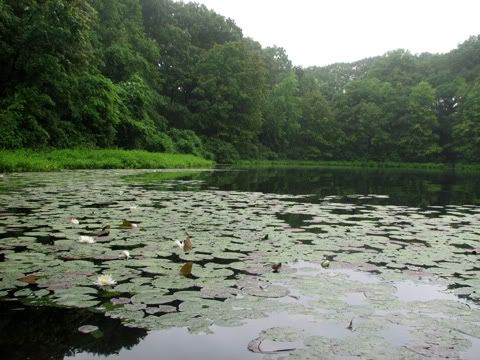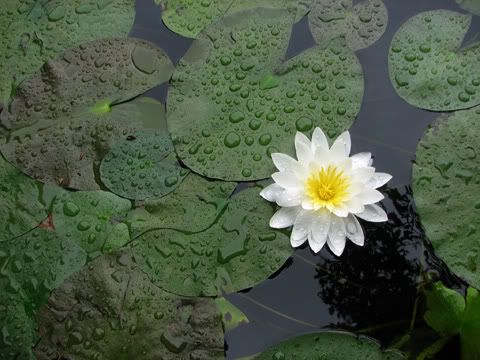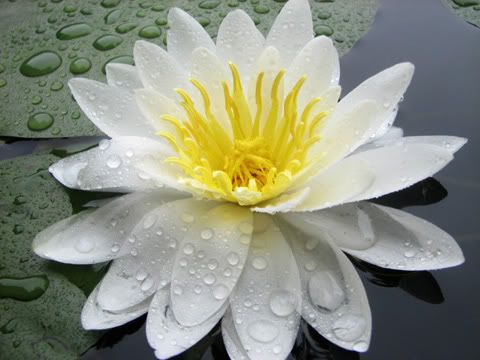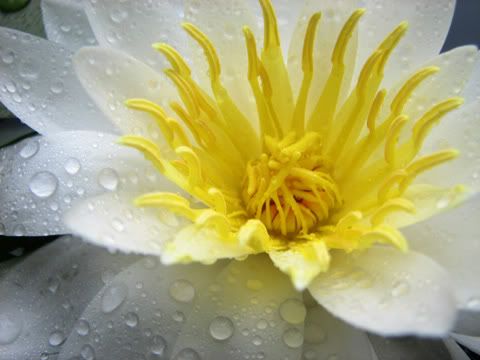365 Urban Species. #176: Eastern Water Lily

Photo by cottonmanifesto. Location: Ward's pond, Boston.
Urban species #176: Eastern water lily Nymphaea odorata
A pond is just a big puddle until it has water lilies on it. Swamps aren't popular with most people, but float some circular leaves and large white blossoms on one, and it can be inspiration for art. Monet was painting the Nympaea alba that grew in his water garden, but in eastern North America we enjoy N. odorata. Its scientific name indicates that it is fragrant, but our vantage point on shore usually precludes direct experience of that. The eastern water lily can be distinguished from its closest relatives by the violet color of the underside of the leaves. Around the world other species grace the surface of ponds, swamps, and gardens of other places.
The eastern water lily is tolerant of alkaline and acid waters, making it well-suited to urban plantings. When it is brought to the west coast it becomes invasive, forming crowded monocultural zones on lakes from California to Alaska. In the east, it plays a variety of roles in the pond ecosystem. Turtles feed on the foliage and rhizomes, the flowers are visited by bees and beetles, and ducks feed on the fruits and perform the important service of seed-dispersal. The floating leaves (lily pads) are well-known for providing platforms for frogs. They also create shade and cover for frogs, fish, and aquatic insects. Snails, detritus-feeding leeches, and planarians cling to their undersides, feeding on algae and bacteria.


